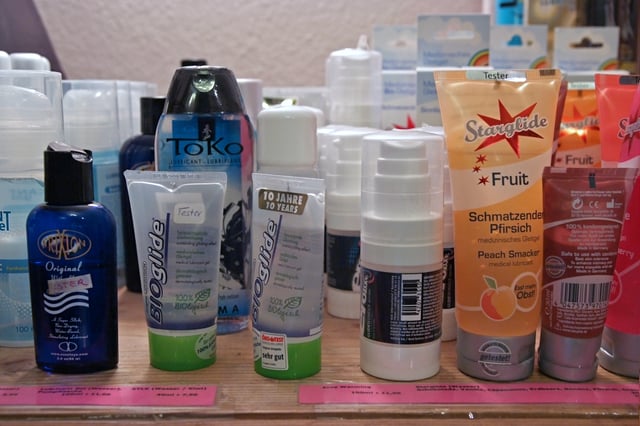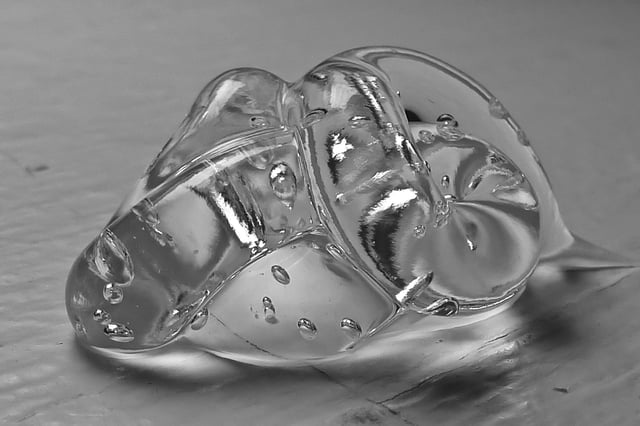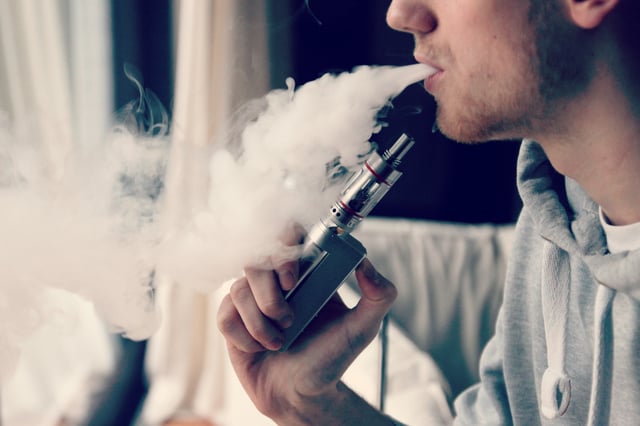Glycerol

Glycerol

| Names | |
|---|---|
| Preferred IUPAC name | |
| Other names | |
| Identifiers | |
| ChEBI | |
| ChEMBL | |
| ChemSpider | |
| DrugBank | |
| ECHA InfoCard | 100.000.263[70] |
| E number | E422(thickeners, ...) |
| KEGG | |
| UNII | |
| Properties | |
| Molar mass | g·mol |
| Appearance | colorless liquidhygroscopic |
| Odor | odorless |
| Density | 1.261 g/cm |
| Melting point | 17.8 °C (64.0 °F; 290.9 K) |
| Boiling point | 290 °C (554 °F; 563 K)[4] |
| miscible[1] | |
| log P | -2.32[2] |
| Vapor pressure | 0.003 mmHg (50°C)[1] |
| -57.06·10 cm/mol | |
| 1.4746 | |
| Viscosity | 1.412 Pa·s[3] |
| Pharmacology | |
| A06AG04()A06AX01(),QA16QA03() | |
| Hazards | |
| Safety data sheet | data pageJT Baker[79] |
| NFPA 704 | |
| Flash point | 160 °C (320 °F; 433 K) (closed cup) 176 °C (349 °F; 449 K) (open cup) |
| US health exposure limits (NIOSH): | |
| TWA 15 mg/m (total) TWA 5 mg/m (resp)[1] | |
| None established[1] | |
| N.D.[1] | |
| Supplementary data page | |
| Refractive index(n),Dielectric constant(ε), etc. | |
| Phase behavioursolid–liquid–gas | |
| UV,IR,NMR,MS | |
| Infobox references | |
Glycerol (/ˈɡlɪsərɒl/;[5] also called glycerine or glycerin; see spelling differences) is a simple polyol compound. It is a colorless, odorless, viscous liquid that is sweet-tasting and non-toxic. The glycerol backbone is found in many lipids which are known as glycerides. It is widely used as a sweetener in the food industry and as a humectant in pharmaceutical formulations. Glycerol has three hydroxyl groups that are responsible for its solubility in water and its hygroscopic nature.[6]
| Names | |
|---|---|
| Preferred IUPAC name | |
| Other names | |
| Identifiers | |
| ChEBI | |
| ChEMBL | |
| ChemSpider | |
| DrugBank | |
| ECHA InfoCard | 100.000.263[70] |
| E number | E422(thickeners, ...) |
| KEGG | |
| UNII | |
| Properties | |
| Molar mass | g·mol |
| Appearance | colorless liquidhygroscopic |
| Odor | odorless |
| Density | 1.261 g/cm |
| Melting point | 17.8 °C (64.0 °F; 290.9 K) |
| Boiling point | 290 °C (554 °F; 563 K)[4] |
| miscible[1] | |
| log P | -2.32[2] |
| Vapor pressure | 0.003 mmHg (50°C)[1] |
| -57.06·10 cm/mol | |
| 1.4746 | |
| Viscosity | 1.412 Pa·s[3] |
| Pharmacology | |
| A06AG04()A06AX01(),QA16QA03() | |
| Hazards | |
| Safety data sheet | data pageJT Baker[79] |
| NFPA 704 | |
| Flash point | 160 °C (320 °F; 433 K) (closed cup) 176 °C (349 °F; 449 K) (open cup) |
| US health exposure limits (NIOSH): | |
| TWA 15 mg/m (total) TWA 5 mg/m (resp)[1] | |
| None established[1] | |
| N.D.[1] | |
| Supplementary data page | |
| Refractive index(n),Dielectric constant(ε), etc. | |
| Phase behavioursolid–liquid–gas | |
| UV,IR,NMR,MS | |
| Infobox references | |
Structure
Production
Glycerol is generally obtained from plant and animal sources where it occurs in triglycerides, esters of glycerol with long-chain carboxylic acids. The hydrolysis, saponification, or transesterification of these triglycerides produces glycerol as well as the fatty acid derivative:
Triglycerides can be saponified with sodium hydroxide to give glycerol and fatty sodium salt or soap.
Typical plant sources include soybeans or palm. Animal-derived tallow is another source. Approximately 950,000 tons per year are produced in the United States and Europe; 350,000 tons of glycerol were produced per year in the United States alone from 2000 to 2004.[10] The EU directive 2003/30/EC set a requirement that 5.75% of petroleum fuels are to be replaced with biofuel sources across all member states by 2010. It was projected in 2006 that by the year 2020, production would be six times more than demand, creating an excess of glycerol.[6]
Crude glycerol from the hydrolysis of triglycerides can be purified by treatment with activated carbon to remove organic impurities, alkali to remove unreacted glycerol esters, and ion exchange to remove salts. High purity glycerol (> 99.5%) is obtained by multi-step distillation; vacuum is necessary due to the high boiling point of glycerol (290 °C).[6]
Synthetic glycerol
Although usually not cost-effective, glycerol can be produced by various routes from propylene. The epichlorohydrin process is the most important; it involves the chlorination of propylene to give allyl chloride, which is oxidized with hypochlorite to dichlorohydrins, which reacts with a strong base to give epichlorohydrin. This epichlorohydrin is then hydrolyzed to give glycerol. Chlorine-free processes from propylene include the synthesis of glycerol from acrolein and propylene oxide.[6]
Because of the large-scale production of biodiesel from fats, where glycerol is a waste product, the market for glycerol is depressed. Thus, synthetic processes are not economical. Owing to oversupply, efforts are being made to convert glycerol to synthetic precursors, such as acrolein and epichlorohydrin.[13] (See the Chemical intermediate section of this article.
Applications
Food industry
In food and beverages, glycerol serves as a humectant, solvent, and sweetener, and may help preserve foods. It is also used as filler in commercially prepared low-fat foods (e.g., cookies), and as a thickening agent in liqueurs. Glycerol and water are used to preserve certain types of plant leaves.[14] As a sugar substitute, it has approximately 27 kilocalories per teaspoon (sugar has 20) and is 60% as sweet as sucrose. It does not feed the bacteria that form plaques and cause dental cavities. As a food additive, glycerol is labeled as E number E422. It is added to icing (frosting) to prevent it from setting too hard.
As used in foods, glycerol is categorized by the Academy of Nutrition and Dietetics as a carbohydrate. The U.S. Food and Drug Administration (FDA) carbohydrate designation includes all caloric macronutrients excluding protein and fat. Glycerol has a caloric density similar to table sugar, but a lower glycemic index and different metabolic pathway within the body, so some dietary advocates accept glycerol as a sweetener compatible with low-carbohydrate diets.
It is also recommended as an additive when using polyol sweeteners such as erythritol and xylitol which have a cooling effect, due to its heating effect in the mouth, if the cooling effect is not wanted.[15]
Medical, pharmaceutical and personal care applications

A bottle of glycerin purchased at a pharmacy

Personal lubricants commonly contain glycerol

Glycerol is an ingredient in products such as hair gel

Glycerol suppositories used as laxatives
Glycerol is used in medical, pharmaceutical and personal care preparations, often as a means of improving smoothness, providing lubrication, and as a humectant. Ichthyosis and xerosis have been relieved by the topical use glycerin.[16][17] It is found in allergen immunotherapies, cough syrups, elixirs and expectorants, toothpaste, mouthwashes, skin care products, shaving cream, hair care products, soaps, and water-based personal lubricants. In solid dosage forms like tablets, glycerol is used as a tablet holding agent. For human consumption, glycerol is classified by the U.S. FDA among the sugar alcohols as a caloric macronutrient. Glycerol is also used in blood banking to preserve red blood cells prior to freezing.
Glycerol is a component of glycerin soap. Essential oils are added for fragrance. This kind of soap is used by people with sensitive, easily irritated skin because it prevents skin dryness with its moisturizing properties. It draws moisture up through skin layers and slows or prevents excessive drying and evaporation.
Taken rectally, glycerol functions as a laxative by irritating the anal mucosa and inducing a hyperosmotic effect,[18] expanding the colon by drawing water into it to induce peristalsis resulting in evacuation.[19] It may be administered undiluted either as a suppository or as a small-volume (2–10 ml) enema. Alternatively, it may be administered in a dilute solution, e.g., 5%, as a high volume enema.[20]
Taken orally (often mixed with fruit juice to reduce its sweet taste), glycerol can cause a rapid, temporary decrease in the internal pressure of the eye. This can be useful for the initial emergency treatment of severely elevated eye pressure.[21]
Glycerol has also been incorporated as a component of bio-ink formulations in the field of bioprinting.[22] The glycerol content acts to add viscosity to the bio-ink without adding large protein, carbohydrate, or glycoprotein molecules.
Botanical extracts
When utilized in "tincture" method extractions, specifically as a 10% solution, glycerol prevents tannins from precipitating in ethanol extracts of plants (tinctures). It is also used as an "alcohol-free" alternative to ethanol as a solvent in preparing herbal extractions. It is less extractive when utilized in a standard tincture methodology. Alcohol-based tinctures can also have the alcohol removed and replaced with glycerol for its preserving properties. Such products are not "alcohol-free" in a scientific sense, as glycerol contains three hydroxyl groups. Fluid extract manufacturers often extract herbs in hot water before adding glycerol to make glycerites.[23][24]
When used as a primary "true" alcohol-free botanical extraction solvent in non-tincture based methodologies, glycerol has been shown to possess a high degree of extractive versatility for botanicals including removal of numerous constituents and complex compounds, with an extractive power that can rival that of alcohol and water–alcohol solutions.Template:Https://www.aciscience.org/docs/Glycerine - an overview.pdf That glycerol possesses such high extractive power assumes it is utilized with dynamic methodologies as opposed to standard passive "tincturing" methodologies that are better suited to alcohol.
Glycerol possesses the intrinsic property of not denaturing or rendering a botanical's constituents inert (as alcohols – i.e. ethyl (grain) alcohol, methyl (wood) alcohol, etc., do).
Glycerol is a stable preserving agent for botanical extracts that, when utilized in proper concentrations in an extraction solvent base, does not allow inverting or reduction-oxidation of a finished extract's constituents, even over several years.
Both glycerol and ethanol are viable preserving agents.
Glycerol is bacteriostatic in its action, and ethanol is bactericidal in its action.[25]Glycerol%20and%20the%20glycols%20]] [27]
Electronic cigarette liquid

Glycerin is often used in electronic cigarettes to create the vapor
Glycerin, along with propylene glycol, is a common component of e-liquid, a solution used with electronic vaporizers (electronic cigarettes). This glycerol is heated with an atomizer (a heating coil often made of Kanthal wire), producing the aerosol that delivers nicotine to the user.[28]
Antifreeze
Like ethylene glycol and propylene glycol, glycerol is a non-ionic kosmotrope that forms strong hydrogen bonds with water molecules, competing with water-water hydrogen bonds. This interaction disrupts the formation of ice. The minimum freezing point temperature is about −36 °F (−38 °C) corresponding to 70% glycerol in water.
Glycerol was historically used as an anti-freeze for automotive applications before being replaced by ethylene glycol, which has a lower freezing point. While the minimum freezing point of a glycerol-water mixture is higher than an ethylene glycol-water mixture, glycerol is not toxic and is being re-examined for use in automotive applications.[29][30]
In the laboratory, glycerol is a common component of solvents for enzymatic reagents stored at temperatures below 0 °C due to the depression of the freezing temperature. It is also used as a cryoprotectant where the glycerol is dissolved in water to reduce damage by ice crystals to laboratory organisms that are stored in frozen solutions, such as bacteria, nematodes, and mammalian embryos.
Chemical intermediate
Glycerol is used to produce nitroglycerin, which is an essential ingredient of various explosives such as dynamite, gelignite, and propellants like cordite. Reliance on soap-making to supply co-product glycerol made it difficult to increase production to meet wartime demand. Hence, synthetic glycerol processes were national defense priorities in the days leading up to World War II. Nitroglycerin, also known as glyceryl trinitrate (GTN) is commonly used to relieve angina pectoris, taken in the form of sub-lingual tablets, or as an aerosol spray.
An oxidation of glycerol affords mesoxalic acid.[31]
Vibration damping
Glycerol is used as fill for pressure gauges to damp vibration. External vibrations, from compressors, engines, pumps, etc., produce harmonic vibrations within Bourdon gauges that can cause the needle to move excessively, giving inaccurate readings. The excessive swinging of the needle can also damage internal gears or other components, causing premature wear. Glycerol, when poured into a gauge to replace the air space, reduces the harmonic vibrations that are transmitted to the needle, increasing the lifetime and reliability of the gauge.[32]
Niche uses
Film industry
Glycerol is used by the film industry when filming scenes involving water to stop areas from drying out too quickly.[33]
Glycerine is used—combined with water (around in a 1:99 proportion)—to create a smooth smoky environment.
The solution is vaporized and pushed into the room with a ventilator.
Ultrasonic couplant
Glycerol can be sometimes used as replacement for water in ultrasonic testing, as it has favourably higher acoustic impedance (2.42MRayl vs 1.483MRayl for water) while being relatively safe, non-toxic, non-corrosive and relatively low cost.[34]
Bubble Mixture
Glycerol is added to bubble mixture for blowing soap bubbles. It creates longer-lasting bubbles by reducing water evaporation.
Internal combustion fuel
Glycerol is also used to power diesel generators supplying electricity for the FIA Formula E series of electric race cars.[35]
Research on uses
Research has been conducted to produce value-added products from glycerol obtained from biodiesel production.[36] Examples (aside from combustion of waster glycerol):
Metabolism
Glycerol is a precursor for synthesis of triacylglycerols and of phospholipids in the liver and adipose tissue. When the body uses stored fat as a source of energy, glycerol and fatty acids are released into the bloodstream. Circulating glycerol does not glycate proteins as do glucose or fructose, and does not lead to the formation of advanced glycation endproducts (AGEs). In some organisms, the glycerol component can enter the glycolysis pathway directly and, thus, provide energy for cellular metabolism (or, potentially, be converted to glucose through gluconeogenesis).
Before glycerol can enter the pathway of glycolysis or gluconeogenesis (depending on physiological conditions), it must be converted to their intermediate glyceraldehyde 3-phosphate in the following steps:
Glycerol has very low toxicity when ingested; its LD50 oral dose for rats is 12600 mg/kg and 8700 mg/kg for mice.
Historical cases of contamination with diethylene glycol
On 4 May 2007, the US Food and Drug Administration advised all US makers of medicines to test all batches of glycerol for the toxic diethylene glycol.[47] This followed an occurrence of hundreds of fatal poisonings in Panama resulting from a falsified import customs declaration by Panamanian import/export firm Aduanas Javier de Gracia Express, S. A. The cheaper diethylene glycol was relabeled as the more expensive glycerol.[48][49]
Etymology
Isomers
1,1,1-Propanetriol
1,1,2-Propanetriol
1,1,3-Propanetriol
1,2,2-Propanetriol
See also
Epichlorohydrin
Nitroglycerin
Oleochemicals
Saponification/Soapmaking
Solketal
Sugar alcohol
Transesterification